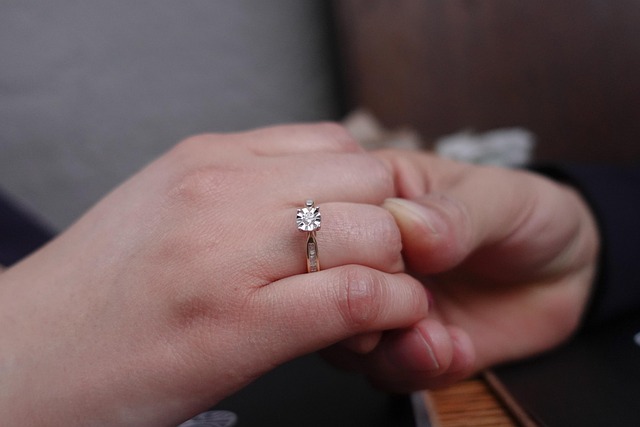Artistic integrity in translating UK art catalogs and exhibition brochures requires specialized services to preserve original essence, mood, and value. This involves expert translators with language and art knowledge, adapting phrasing, choosing equivalent terms, and incorporating cultural nuances for target audiences. Accurate layout replication, use of specialized databases, and native speaker review ensure the aesthetic beauty and artistic intent are conveyed faithfully in the target language, enhancing access to UK artistic creativity via professional translation services.
In the realm of cultural exchange, translating UK art catalogs and exhibition brochures presents unique challenges. This article delves into the intricate task of preserving artistic integrity in translations, a crucial aspect often overlooked. We explore strategies to navigate the complexities, including understanding artistic nuances, employing visual preservation techniques, and the pivotal role of native speakers with cultural sensitivity. By embracing these approaches, translation services can accurately represent the vibrant tapestry of UK art, ensuring its essence shines through for global audiences.
- Understanding Artistic Integrity in Translation
- Challenges in Translating UK Art Catalogs
- Techniques for Preserving Visual Elements
- Role of Native Speakers and Cultural Sensitivity
Understanding Artistic Integrity in Translation

Artistic integrity in translation goes beyond merely converting words from one language to another. It involves preserving the essence, mood, and artistic value of the original work, especially when it comes to UK art catalogs and exhibition brochures. These documents are not just informational; they are visual and literary expressions that showcase artistic creativity and cultural heritage.
When translating such materials, specialized translators with a deep understanding of both languages and art must be engaged. They should strive to convey not only the literal meaning but also the intended aesthetic experience. This might include adapting phrasing, choosing equivalent artistic terms, and even incorporating cultural nuances specific to the target audience, ensuring that the translated UK art catalogs and exhibition brochures resonate just as powerfully in their new linguistic context.
Challenges in Translating UK Art Catalogs

Translating UK art catalogs and exhibition brochures presents unique challenges that go beyond simple word-for-word substitutions. These materials often contain not just textual descriptions but intricate visual elements, requiring translation services that can capture both the essence of the artwork and the artistic vision behind it. The complexity intensifies when dealing with specialized terminology in fields like art history or conservation, where precise rendering is crucial to maintain intellectual integrity.
Additionally, cultural nuances play a significant role. UK art catalogs often reflect diverse perspectives and historical contexts, necessitating translators who understand not just the language but also the cultural backdrop of the content. Accurate translation demands a deep appreciation for artistic expression, ensuring that the adapted material resonates with international audiences while remaining faithful to its original intent and meaning.
Techniques for Preserving Visual Elements

When translating UK art catalogs and exhibition brochures, preserving artistic integrity requires a nuanced approach to visual elements. The first step is to ensure that the layout and design are accurately replicated in the target language. This involves careful handling of formatting, including font styles, sizes, and positioning, to maintain the original aesthetic.
Additionally, for works of art with specific visual characteristics—such as color palettes, linework, or unique artistic styles—translators should consider using descriptive terms that accurately convey these elements. Advanced translation software equipped with artistic terminology databases can aid in maintaining the visual integrity by suggesting appropriate translations for artistic concepts and techniques.
Role of Native Speakers and Cultural Sensitivity

The role of native speakers is pivotal in preserving artistic integrity during translations, especially for UK art catalogs and exhibition brochures. These documents often contain nuanced cultural references, subtle puns, and unique artistic terminologies that require a deep understanding of both the source and target languages. Native speakers bring their innate cultural sensitivity to the table, ensuring that these subtleties are not lost in translation. They can capture the essence of the original work, conveying its meaning accurately while respecting the artist’s vision.
Cultural sensitivity is paramount in art translation as it involves more than just word-for-word substitution. It demands an appreciation for cultural context, symbolism, and artistic conventions. UK art catalog and brochure translators must be adept at navigating these complexities to create materials that resonate with the intended audience. This involves extensive research, consultation with artists and experts, and a commitment to preserving the original artwork’s integrity in the translated version.
Preserving artistic integrity in translations, particularly for UK art catalogs and exhibition brochures, requires a nuanced approach. By combining technical proficiency with an understanding of cultural context, professional translation services can accurately convey not just words but also the visual and aesthetic elements that define these art pieces. Native speakers and cultural sensitivity play pivotal roles in ensuring the essence of the original work is respected, making accessible the rich artistic tapestry of the UK to a global audience.



